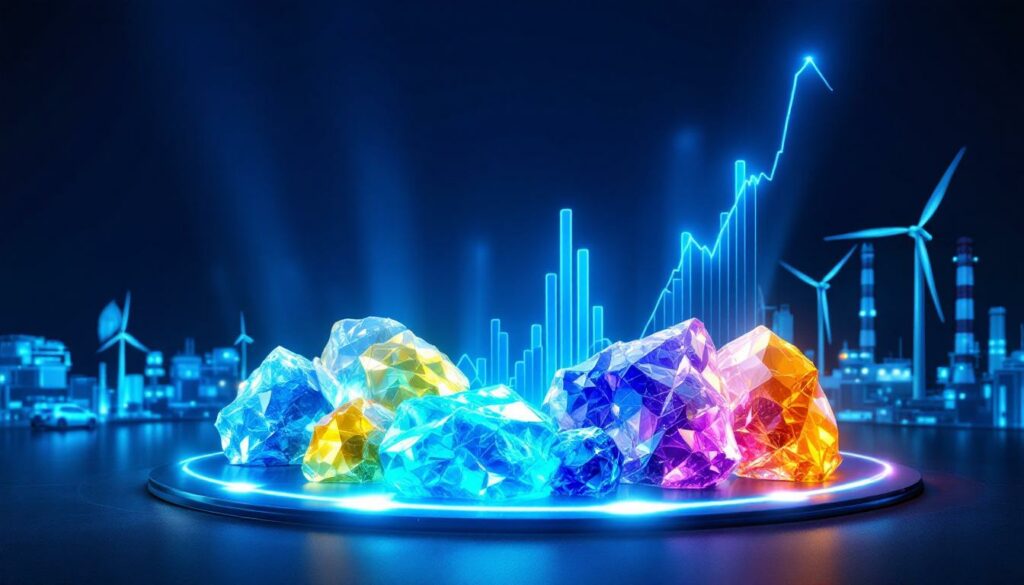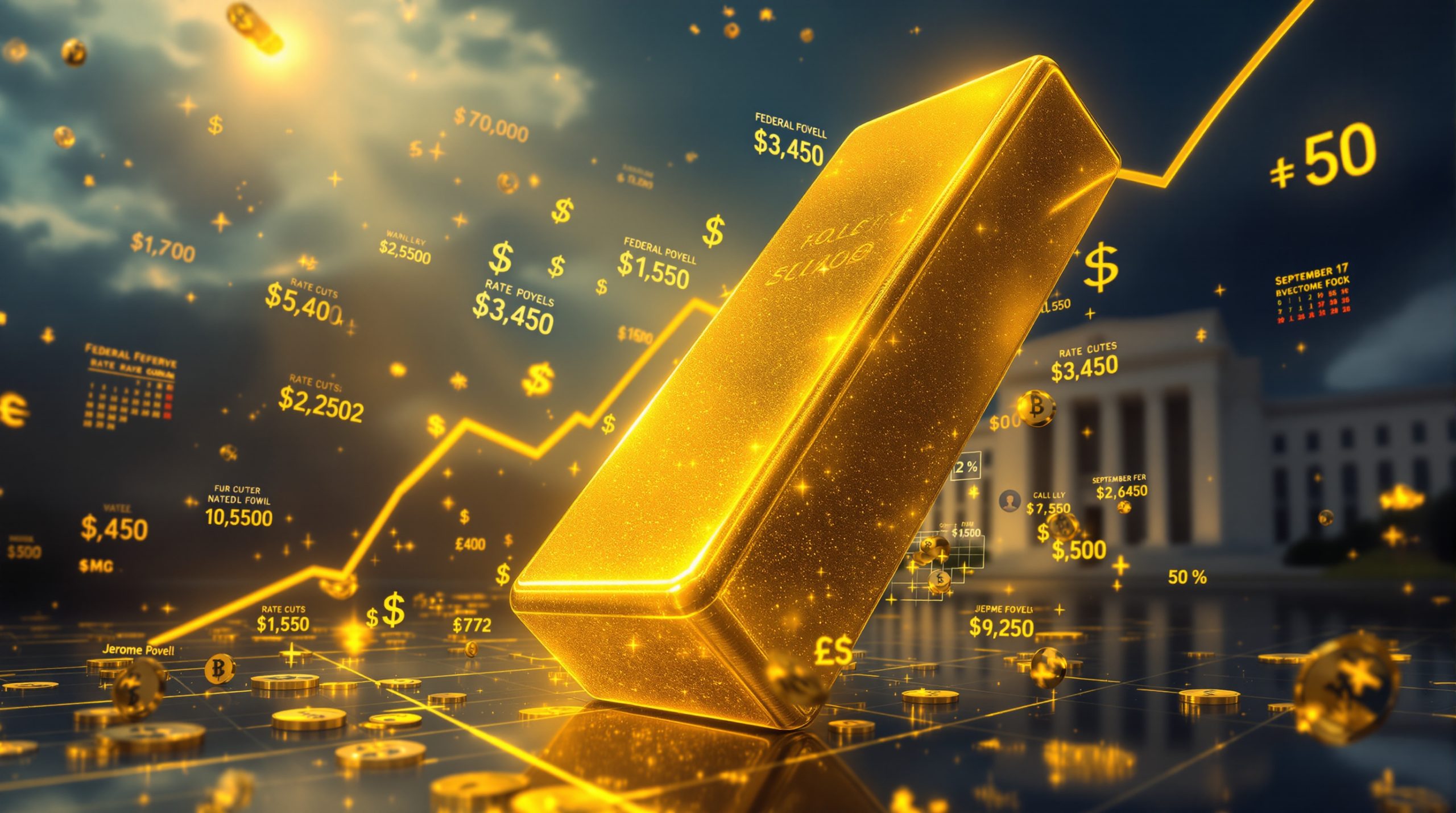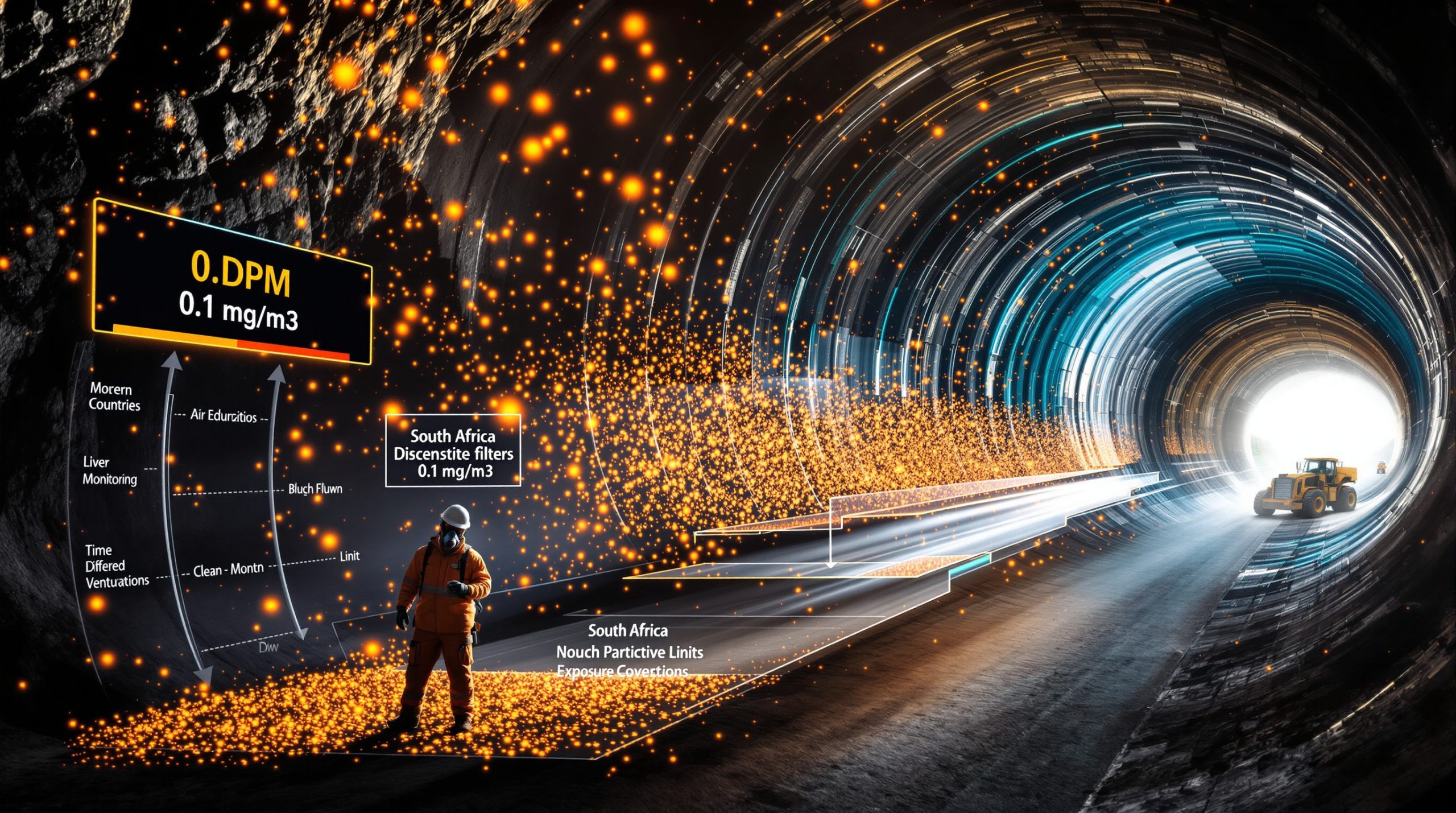Expanding European Heavy Rare Earth Price Transparency: Market Impact and Strategic Significance
In a significant development for critical materials markets, Fastmarkets has introduced three new weekly heavy rare earth product prices for the European market. This strategic expansion follows months of global supply chain disruptions triggered by China's export controls and represents a crucial step toward greater market transparency in an increasingly fragmented global rare earth landscape.
What is Driving Fastmarkets' Expansion of Rare Earth Price Assessments?
Recent Market Developments
Fastmarkets has substantially expanded its European rare earth pricing coverage with three new weekly assessments targeting critical heavy rare earth elements. This expansion builds upon their earlier introduction of the Gadolinium Oxide price in May 2025, creating a comprehensive suite of European rare earth price benchmarks.
The timing is particularly significant as it comes just four months after China implemented export controls on high-temperature rare earth magnets in April 2025. These controls have created substantial market disruptions across multiple industrial sectors, from automotive manufacturing to advanced electronics and medical technology.
The new price assessments specifically target materials that have become increasingly strategic in global technology supply chains, particularly those vital to critical minerals transition and high-performance electronic applications.
New Price Assessments Added to the Suite
Fastmarkets' expanded European rare earth price suite now includes:
- Yttrium Oxide 99.999% ex-warehouse Rotterdam
- Dysprosium Oxide 99.5% ex-warehouse Rotterdam
- Terbium Oxide 99.99% ex-warehouse Rotterdam
- Gadolinium Oxide 99.99%-99.999% ex-warehouse Rotterdam (launched May 2025)
These assessments provide critical pricing transparency for materials that previously lacked reliable European benchmarks despite their growing strategic importance.
Caroline Messecar, strategic markets editor for technology metals at Fastmarkets, emphasized the company's commitment: "We are excited to launch more weekly European rare earth prices to complement our existing China price suite. We will continue to work with the entire supply chain to support existing and emerging markets."
Why Are Heavy Rare Earth Prices Becoming More Critical?
Global Supply Chain Disruptions
China's April 2025 export controls on high-temperature rare earth magnets have created unprecedented disruptions in global supply chains. Seven heavy rare earth elements fall under these controls: gadolinium, dysprosium, terbium, scandium, lutetium, yttrium, and samarium.
These restrictions have triggered a cascade of supply chain crisis across multiple industries, creating significant challenges for manufacturers worldwide who depend on these materials for advanced technologies.
Western markets, in particular, have experienced increased uncertainty and price volatility as they scramble to secure alternative supply chains. The resulting market fragmentation has highlighted the strategic vulnerability of being overly dependent on a single source for these critical materials.
Strategic Industrial Applications
The impact of these supply disruptions extends across numerous high-value industrial sectors:
- Automotive manufacturing: Electric and hybrid vehicle drivetrains rely heavily on high-temperature magnets containing dysprosium and terbium to maintain performance at operational temperatures
- Semiconductor production: Various rare earth elements play essential roles in manufacturing processes and component materials
- Electronics manufacturing: Consumer electronics require these materials for miniaturization and performance enhancement
- Medical technology: Advanced diagnostic equipment, specialized lasers, and certain pharmaceutical applications depend on rare earth elements
- Research and development: Innovation in materials science and technology faces increasing constraints as supply uncertainty grows
These sectors represent the backbone of modern industrial economies, making stable access to heavy rare earths a matter of both economic and national security concern for many countries.
How Are Different Heavy Rare Earth Markets Evolving Outside China?
Yttrium: Established Import Market
Yttrium represents one of the more mature non-Chinese rare earth markets, with established import patterns and consistent demand. According to Fastmarkets' rare earth insights, yttrium has "a small but well-established import market with applications in steel and aluminium alloys, catalysts, ceramics, lasers and electronics."
This relative market stability makes yttrium somewhat distinctive among heavy rare earths, with more predictable supply chains compared to other elements in this category. Its diverse applications across multiple industries have created a more resilient market structure that helps buffer against supply disruptions.
The pricing transparency now provided by Fastmarkets' Yttrium Oxide assessment will further support market development by giving participants reliable benchmarks for contract negotiations and strategic planning.
Dysprosium and Terbium: Emerging Western Markets
In stark contrast to yttrium, dysprosium and terbium markets outside Asia have historically been much more limited. Fastmarkets notes that "the markets for dysprosium and terbium remain small outside of Asia, with import demand primarily focused in Japan and China, the largest consumer, due to its large magnet industry."
Western applications have traditionally been concentrated in specialized niches, with Fastmarkets observing that "in the western hemisphere, terbium and dysprosium have primarily been used in niche applications such as electronics, lasers, sonar and thin-film coatings."
However, this pattern is rapidly changing as demand for high-temperature magnets grows, particularly in electric vehicle and renewable energy applications. The introduction of European price assessments for these elements reflects their increasing strategic importance beyond traditional Asian markets.
What Value Do Transparent Price Assessments Provide to Market Participants?
Benefits for Supply Chain Stakeholders
The expansion of European heavy rare earth price assessments delivers multiple strategic benefits for market participants:
- Increased transparency: Previously opaque markets gain reliable reference points for valuation
- Improved contract structuring: Both buyers and sellers can negotiate more effectively with independent price benchmarks
- Risk management capabilities: Market participants can better assess and hedge price risks
- Strategic planning tools: Companies can make more informed investment decisions with reliable pricing data
- Market intelligence: Trends become more visible, allowing for better anticipation of market movements
As Fastmarkets notes, "There is a growing need for transparent, transaction-based pricing as markets adapt to a changing world." This is particularly true in markets experiencing structural shifts, as is currently occurring with rare earths.
Industry Perspectives on Price Transparency
Industry leaders have welcomed the introduction of more transparent pricing mechanisms for European rare earth markets. Ramón Barúa Costa, CEO of Aclara Resources, emphasized the strategic importance of the new dysprosium price assessment:
"At Aclara, we see this dysprosium price as essential for the sustainable development of heavy rare earths in western markets. Reliable pricing outside of China is a big step forward. While a price for sustainably sourced dysprosium suited for high-volume, long-term contracts is still needed, this is an important first building block."
This perspective highlights how transparent pricing supports the development of alternative supply chains, potentially reducing dependency on Chinese sources over time. It also suggests the future evolution of pricing mechanisms to differentiate between conventionally sourced and sustainably produced materials.
What Are the Key Applications Driving Demand for Heavy Rare Earths?
Traditional Industrial Applications
Heavy rare earth elements have established roles across numerous industrial applications:
- Metallurgical additives: Improving the performance characteristics of specialty alloys
- Catalytic processes: Enhancing chemical reactions in industrial and environmental applications
- Advanced ceramics: Creating materials with exceptional thermal and mechanical properties
- Phosphor technologies: Enabling precise color rendering in lighting and displays
- Optical applications: Supporting laser technologies and precision optics
These traditional applications have formed the foundation of rare earth demand for decades, creating stable consumption patterns that have primarily been served by Chinese production.
Emerging Clean Energy Applications
The clean energy transition is dramatically reshaping demand patterns for heavy rare earths, with several applications driving particularly strong growth:
- Wind power generation: Direct-drive wind turbines require substantial quantities of neodymium, praseodymium, dysprosium, and terbium for their permanent magnet generators
- Electric mobility: EV traction motors rely on high-performance magnets containing heavy rare earths to maintain efficiency at operational temperatures
- Grid storage systems: Various energy storage technologies incorporate rare earth materials in their components
- Hydrogen technologies: Emerging hydrogen production and fuel cell systems utilize rare earth catalysts and components
- Advanced nuclear: Next-generation nuclear technologies may increase demand for certain rare earth elements
As Fastmarkets notes, "Export restrictions and a growing market for high-temperature magnets—key components in electric and hybrid vehicle drivetrains—are driving global demand." This shift toward clean energy applications represents perhaps the most significant change in rare earth market dynamics in decades.
How Is the Global Rare Earth Market Landscape Changing?
Shifting Supply-Demand Dynamics
The global rare earth landscape is undergoing fundamental restructuring, characterized by:
- Market fragmentation: China's export restrictions are creating distinct price environments in different regions
- Supply diversification efforts: Countries and companies are accelerating projects to develop non-Chinese sources
- Price divergence: Growing premiums for materials outside Chinese control
- Recycling initiatives: Increased investment in technologies to recover rare earths from end-of-life products
- Substitution research: Efforts to develop alternative materials for critical applications
These shifts are occurring against a backdrop of growing strategic competition between major powers, with rare earths increasingly viewed as materials of national security importance rather than merely industrial commodities.
Regional Market Development Efforts
Multiple regions are pursuing strategies to reduce dependency on Chinese rare earth supplies:
- European Union: The European CRM facility specifically targets rare earth supply chain development
- North America: Both the United States and Canada have designated rare earths as critical minerals, with various support mechanisms for domestic production
- Australia: Positioned as a potential alternative supplier with several advanced projects
- Japan: Long-standing efforts to diversify supply through international partnerships and investments
- Emerging producers: Countries like Vietnam, Brazil, and Greenland critical minerals exploring opportunities to develop their resources
The introduction of European price assessments by Fastmarkets expands heavy rare earth price suite in europe while representing an important step in supporting these diversification efforts by providing the pricing transparency needed for investment decisions.
What's Next for Rare Earth Markets and Pricing?
Future Price Assessment Developments
The rare earth pricing landscape will likely continue evolving in several directions:
- Expanded element coverage: Additional rare earth elements may receive dedicated price assessments
- Sustainability differentiation: Separate price assessments for conventionally and sustainably sourced materials
- Regional pricing expansions: More granular coverage of emerging production centers
- Recycled material pricing: Potential development of price assessments for secondary materials
- Derivative pricing: Possible development of financial instruments based on rare earth benchmarks
These developments would further enhance market transparency and provide additional tools for price risk management in increasingly volatile markets.
Strategic Considerations for Market Participants
Market participants face several strategic considerations in navigating the evolving rare earth landscape:
- Supply chain mapping: Understanding exposure to potential disruptions
- Long-term contracting strategies: Balancing price certainty against flexibility
- Geographical diversification: Reducing dependency on single-region sourcing
- Technology adaptation: Evaluating alternatives that reduce dependency on the most constrained elements
- Regulatory monitoring: Tracking evolving export controls, environmental regulations, and strategic minerals policies
The availability of reliable European price assessments provides a crucial tool for navigating these complex strategic decisions in a market undergoing rapid industry evolution trends.
FAQ: Heavy Rare Earth Markets and Pricing
What factors influence heavy rare earth prices in Europe?
European heavy rare earth prices are influenced by multiple factors, including global supply-demand balances, Chinese export policies, transportation costs, material specifications, and processing capacity constraints. The relative immaturity of European markets compared to Asian markets can result in greater price volatility and wider bid-ask spreads during periods of market uncertainty.
How do European rare earth prices compare to Asian markets?
European rare earth prices typically carry premiums over Asian markets, reflecting additional logistics costs, smaller trading volumes, and supply chain complexities. These premiums can expand significantly during periods of supply disruption or geopolitical tension, as witnessed following China's implementation of export controls in April 2025.
What industries benefit most from transparent rare earth pricing?
Industries with the greatest benefit from transparent rare earth pricing include electric vehicle manufacturers, wind turbine producers, electronics manufacturers, defense contractors, and specialized materials companies. Investment firms evaluating rare earth projects, commodity traders, and strategic planners in technology companies also derive significant value from reliable price assessments.
How frequently are these price assessments updated?
Fastmarkets updates its European heavy rare earth price assessments on a weekly basis. This frequency balances the need for timely information against the reality of relatively thin trading volumes in European markets, ensuring sufficient transaction data to support reliable assessments.
Disclaimer: This article contains information about commodity markets that may be subject to rapid change. While every effort has been made to ensure accuracy, market conditions can shift quickly. Readers should consult multiple sources when making business or investment decisions related to rare earth markets.
Ready to Spot the Next Major Mineral Discovery?
Discover why significant mineral discoveries can lead to substantial market returns by exploring Discovery Alert's dedicated discoveries page, where their proprietary Discovery IQ model delivers real-time alerts on ASX announcements, turning complex mineral data into actionable insights. Begin your 30-day free trial today at discoveryalert.com.au/discoveries/ and position yourself ahead of the market.




